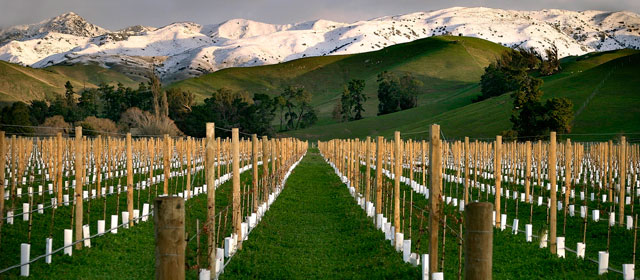Story summary
Marlborough is a rectangular block in the north-east South Island, known for its sunny weather. The main towns are Blenheim (originally called ‘the Beaver’) and Picton.
Landscape
Northern Marlborough is mostly hill country. The Marlborough Sounds is an area of hills separated by river valleys that have been flooded by the sea since the last ice age. In the south are the Inland and Seaward Kaikōura ranges. Around Blenheim is the Wairau plain, a drained swamp.
Climate
The Wairau area is dry and sunny. There is more rain on the Kaikōura coast and in the Sounds. There are sometimes floods on the low-lying Wairau plain.
Plants
When Europeans arrived, northern Marlborough was covered in native forest, with tussock and grassland more common in southern Marlborough. Much of the forest was cleared for farming.
Marine animals
In Māori tradition a taniwha called Tuhirangi (probably a dolphin) guided the navigator Kupe. From 1888 to 1912 a dolphin nicknamed Pelorus Jack guided boats through Te Aumiti (French Pass). The deep undersea Kaikōura Canyon brings sperm whales close to the Kaikōura coast.
Māori history
Marlborough is part of Te Tau Ihu o te Waka-a-Māui (the prow of Māui’s canoe) – the upper South Island coast. In tradition, the navigator Kupe fought with a great octopus in Tory Channel.
The remains of early Polynesian settlers were found at Wairau Bar. Māori made adzes from argillite rock, found on Rangitoto ki te Tonga (D’Urville Island). A number of North Island tribes migrated and settled in Marlborough.
European settlement
From the late 18th century European whalers, sawmillers and miners arrived in Marlborough. In June 1843 a disagreement over land ownership led to conflict at Tuamarina between European settlers and Ngāti Toa. Twenty-two Pākehā and at least four Māori were killed.
Industry
In the 19th century timber milling, gold mining and flax milling all took place in Marlborough. Industries in the 2000s included salt production and aquaculture (farming seafood).
Farming
Large sheep stations were established in the south – but rabbits devastated many holdings. Later, some stations were divided into smaller farms.
Wine
From the 1970s grapes were planted in Marlborough for winemaking. Sauvignon blanc is the most common variety, and has become internationally famous.
Transport
Marlborough is the closest part of the South Island to the North Island, but for many years the main sea route between the islands bypassed the region. Since 1962, however, ferries between Wellington and Picton have been part of the main trunk rail and road route.
Government
Marlborough was part of Nelson province, but separated from it in 1859. It is in the Kaikōura electorate, and in Te Tai Tonga Māori electorate.
Population
In 2013 Marlborough’s population was 46,968. Blenheim was the largest town, with 24,000 people.





